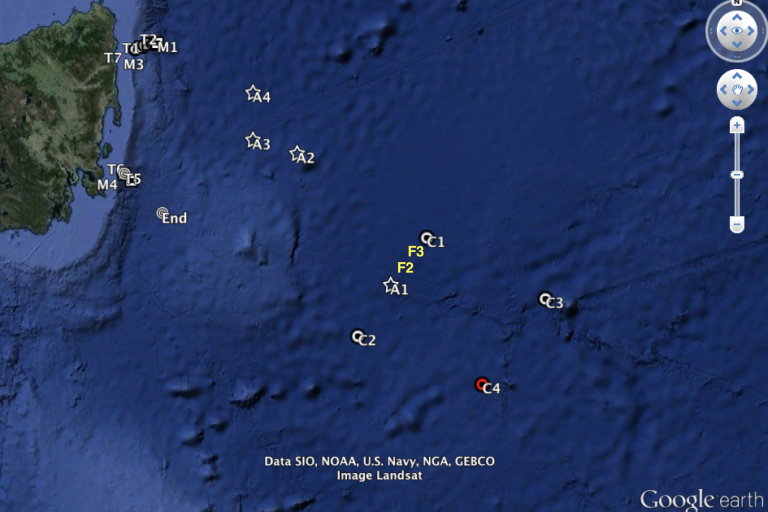The moment that all field scientists crave has arrived – preliminary data! Team T-Beam ran two successful profiles and are hot on the trail of identifying the area of highest energy of the internal tide. Here’s an update of their progress so far. During a preliminary 30 hour period, the ship steamed back and forth across a 200km transect thought to be the most likely location of the T-Beam (Transect C1 – C2).
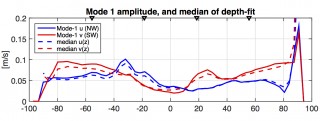
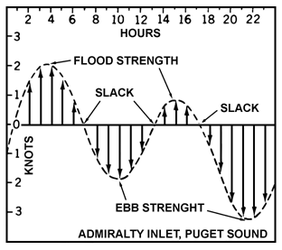
The midpoint of this transect marked the location of one of the moorings deployed by the Revelle. During this trek we traversed the transect six times and the shipboard ADCP collected water velocity data down to 800 meters depth. As we’ve discussed before, the ADCP measures current velocity in two orthogonal directions, North-South (the V-velocities) and East-West (the U-velocities). Taking these two directional velocities together gives a picture of the overall trajectory of the current. Remember that the internal tide is driven by the semi-diurnal tidal cycle and the tides move in a back and forth direction (like when the tide comes in and then goes back out on a beach). The semi-diurnal tide in the Tasman Sea should move bi-directionally along a NW – SE line.
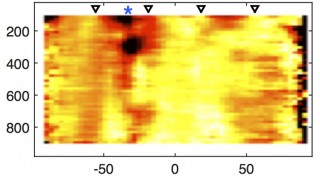
A sign of the sine wave
In addition, the velocities of the diurnal tide over time will fit on a sine curve. What this shows is the velocity speeds up and slows down at different times in the cycle (for example, when the tide is all the way in, the current speed approaches zero). The velocity also changes direction (positive and negative) depending on whether the tide is coming or going. Here’s where the preliminary data provide some promising results. When the science team plotted all of the ADCP velocity data onto a graph, the velocities over time fit onto a sine curve with the correct period – a good indication that the data are representing the expected tidal cycle. Also exciting is that the relationship between the U velocity (N-S) and the V velocity (E-W) indicates that the current is moving in the same directional angle as the T-Beam. So they are pretty sure that they’ve found the internal beam! Previously the location of the internal tide beam was only predicted by a (very sophisticated) computer model. This is what scientists call ground-truthing a model.
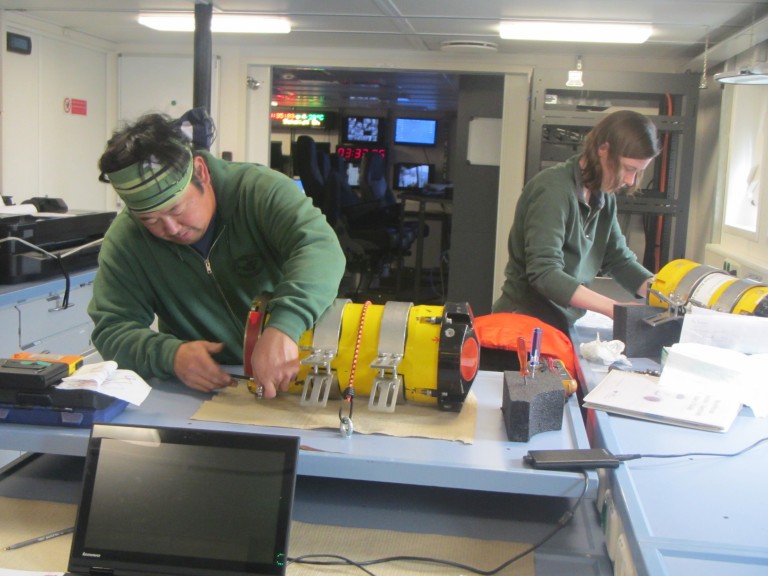
Planning the next step
Another interesting development is that there is an area along the 200km transect that shows much higher velocities than the surrounding areas. This can be seen in a graphic called a contour plot, which uses color to visualize velocity and direction through the water column. In this contour plot, there is an area (*) where the velocity is very high (dark red/black). Could it represent the center of the T-Beam? We don’t know for sure just yet, but not surprisingly, this is the location that the science team decided to conduct the first full LADCP/CTD profile (F2). The second profile was located further north along the transect (F3). Each of these profiles was conducted over 30 hrs between the surface and 1700m depth, with a full cast (up and down) occurring every 2 hours. Those data now await further analysis, as the scientists decide their next move. At the moment, we are back in port for a few hours picking up some new equipment and preparing for another round of profiles.
